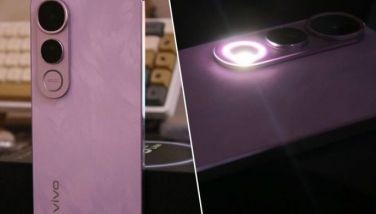Imagine
Just last week I got several e-mails from car audio enthusiasts who are obviously just starting out in the hobby.
Equally surprising for me was receiving e-mails from readers as far as New York who may have stumbled upon AudioFile online.
Of special interest to New Yorkers Samuel and Greg Norton, Neil Cassidy, Michael Bates and Stephen Andre, and Emil Rommel Acosta (from Manila) among others, was how they can achieve accurate stereo imaging and sound staging from their respective mobile or car audio systems.
Although this column is designed to reach out primarily to home audio aficionados, I have entertained in previous editions queries from car audio hobbyists. In previous columns, I believe I clearly laid down the basics on how one can set up a mobile audio system that would produce a sound resembling that of a home audio system. I have emphasized time and time again that my sound “reference†would always be the home audio system where sound imaging is easier to achieve.
In mobile audio, getting better imaging requires basic knowledge of your components and how they work together with your car or truck, and in relation to the people sitting in those vehicles. But unlike a room in your house which is spacious enough for a good sound system, automobiles have acoustic limitations that you have to compensate for.
Imaging is the capacity of your audio system to recreate sounds that, even with your eyes shut, enable you to imagine the location of the sound instruments — from right to left in any kind of recording. Imaging is important to people who have a high appreciation for music — from the simple enthusiast to the serious competitor. If your system has superior imaging, you can easily tell where the voices and instruments are, regardless of frequency fluctuations.
The speakers, likewise, should seem invisible. In its stead is this spatial harmony of various sources of music often called soundstage. Although soundstage is recreated by your front and rear speakers, the music should seem to emanate from in front of you, engulfing the space from left to center to right.
When you listen to music with your home audio system, you will not be foolish enough to position yourself near any of your speakers. Otherwise, you’d miss out on the details that either of your left or right channels dishes out, and the breadth of a full-stereo image. You get the same uneven results if you listen to music while sitting in the driver’s seat with a standard built-in speaker system.
In this situation, you hear the sound on your left way ahead of the sound on your right. This radically alters your system response. Within certain bandwidths, some frequencies are emphasized over others, totally distorting the soundstage.
Proper imaging requires a close-to-equal path length between your ears and your speakers. The paths should likewise be free from obstruction. Toying around with your head unit’s balance control won’t help because it can only make the listening experience of your passenger wretched.
To overcome this limitation, I recommend that you mount your front speakers on a set of customized kick panels inside your cars. You should install them under your dashboard in the far left and right corners of your car interiors. With your separates located in the pods by your feet, equal path lengths are achieved. Now you’re ready for music which that has dynamic balance and a natural soundstage.
Many inexpensive products that offer imaging solutions are available on the market today. Now, we have rotating pods and lenses built-in to full-range speakers. These products allow you to turn the tweeter directly at you. Focusing high frequencies to your listening position can improve soundstage. However, since the full-range speakers are still factory installed, the soundstage is not what it should be. To compensate, you can try what is called the “horizontal array.†You can achieve this by mounting additional tweeters and midranges on the dashboard on each side of the listener.
Once you’re done with your front speakers, it is time to ensure that your rear speakers complement your system in achieving soundstage. The volume level of your rear speakers should be faint enough for you to be barely conscious of them. Rear speakers add ambience and depth to your system. If they output too much high frequency, they’ll take away the stereo image from the front.
Just imagine the hours of listening pleasure you’ll derive if your car audio is able to transport you from the noise and misery of stalled traffic right into the concert hall where your favorite artist is performing!
* * *
For comments or questions, please e-mail me at audioglow@yahoo.com or at vphl@hotmail.com. You can also visit www.wiredstate.com for quick answers to your audio concerns.















